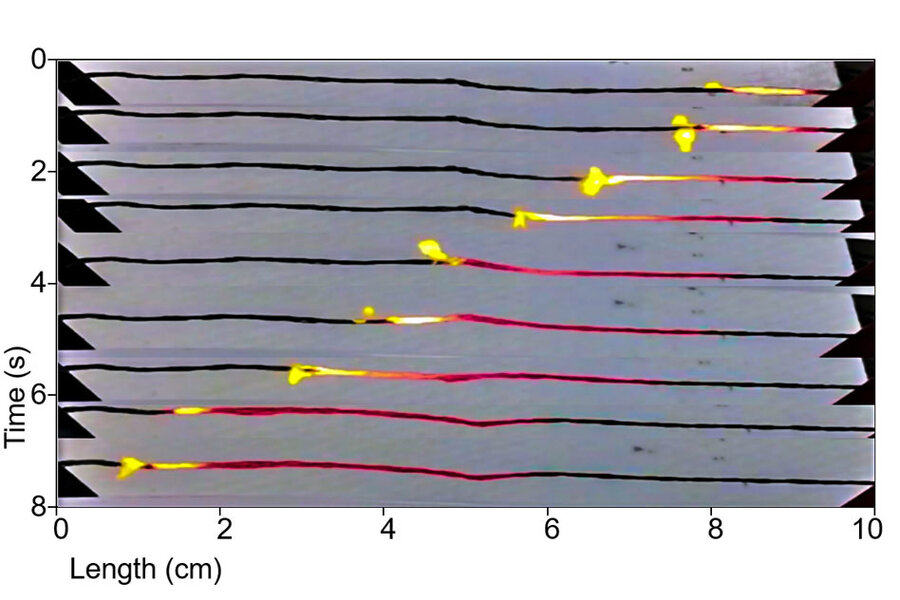MIT develops nontoxic battery that could help clean up e-waste
Loading...
Engineers at MIT have produced a new type of battery that converts chemical energy to electrical energy without using the toxic and flammable chemical components of lithium-ion batteries or fuel cells.
“These results represent a significant advancement toward realizing [thermopower wave] devices as new portable, high power-density energy sources that are metal free,” wrote researchers in a paper published in Energy & Environmental Science in January.
In the paper, chemical engineers reported that they have generated electricity by igniting a coiled wire made from heat-conducting carbon nanotubes and coated in combustible sugar to produce an electrical current that travels from one end to the other.
The benefit of using this technique instead of current battery technologies is that it is safer, made of a renewable resource, unlike lithium-ion batteries, and has the potential to reduce battery sizes by 20 times, says Michael Strano, a chemical engineering professor and co-author on the paper.
Toxic metals chemicals in lithium batteries found in smartphones and other portable electronic devices can pose significant environmental problems. When such devices end up in landfills, the toxic compounds can leach into the soil. When recycled, such devices frequently end up shipped to developing nations where workers, many of whom are children, are ill-equipped to handle toxic materials.
The new battery can be used to power electronic devices, such as LED lights. And, because it doesn’t appear to lose power over time, it could be used in deep-space probes that travel dormant through space for years, requiring electricity when they reach their destination planets in order to send data back to Earth.
But the MIT team and other engineers point out that there is still years or research to be done before the technology could be used commercially.
“I believe that we are still far from the upper limit that the thermopower wave devices can potentially reach,” said Kourosh Kalantar-Zadeh, a professor of electrical and computer engineering at RMIT University in Australia who was not involved in this research, in an interview with MIT News.
“However, this step makes the technology more attractive for real applications,” he said.
Professor Strano first discovered this technique in 2010, but with his team has since then improved the efficiency of the process by 10,000 times, reports an MIT announcement, which means it can produce power that can compete with today’s best batteries, the scientists say.
The series of improvements over the years, “brings [the technology] from a laboratory curiosity to being within striking distance of other portable energy technologies,” Strano said.






